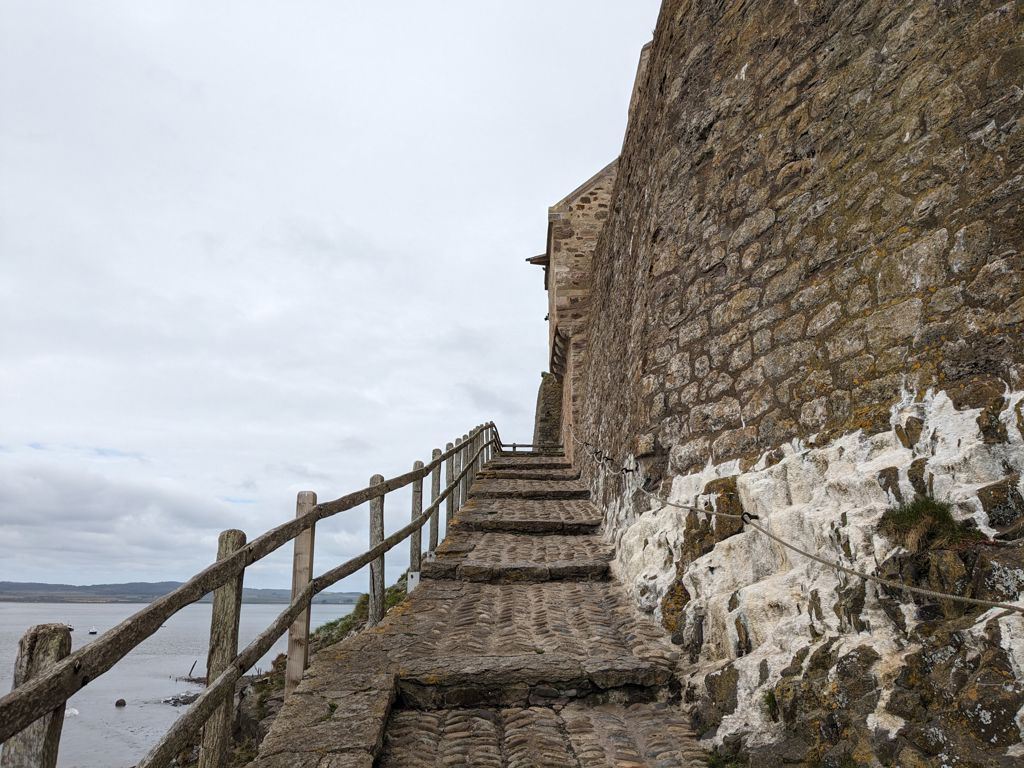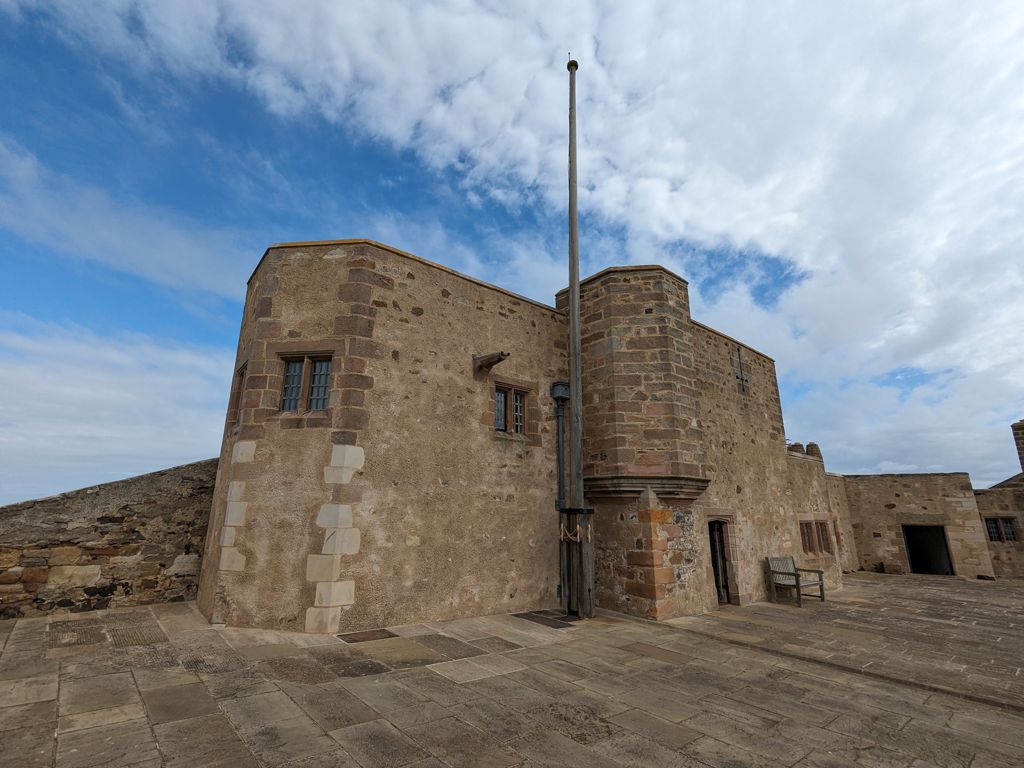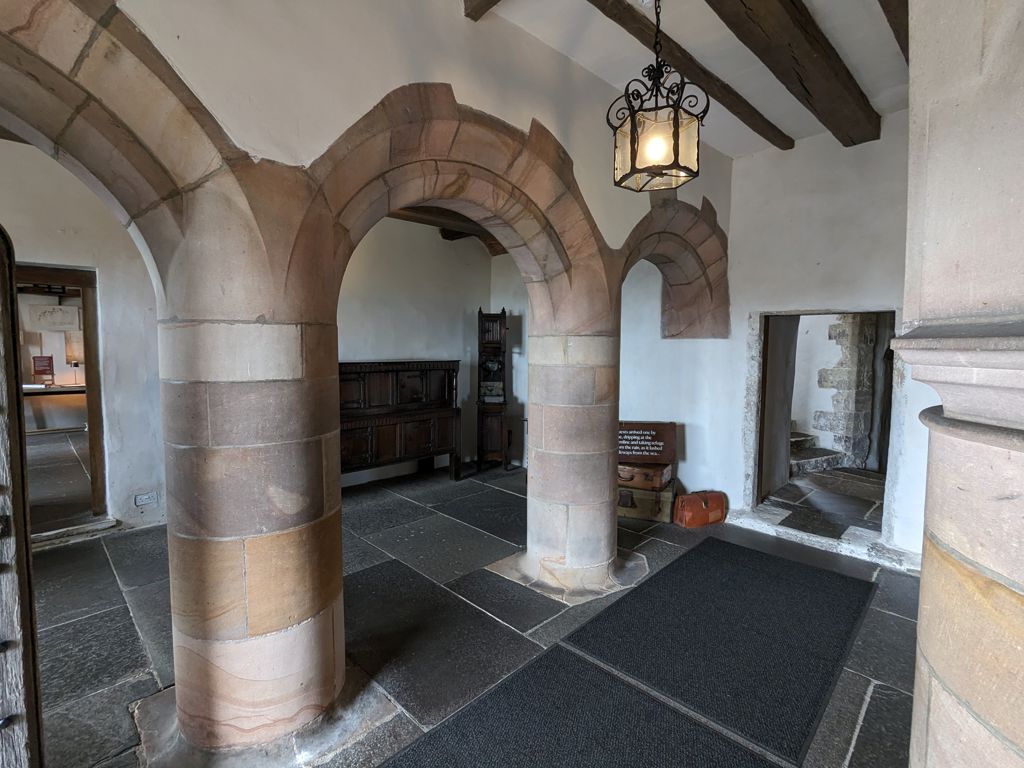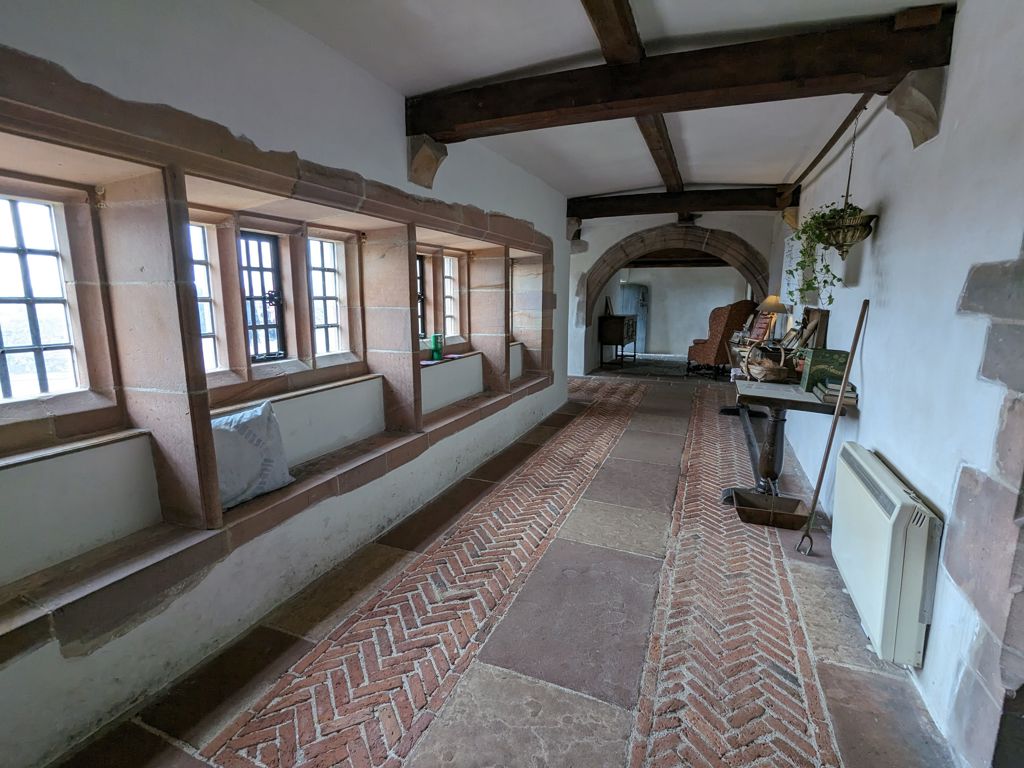Lindisfarne Castle

Lindisfarne Castle is located on Holy Island in Northumbria and only accessible from the mainland during low tide by a causeway. Whether we should class it a castle is a matter of debate as it was built in the 16th century as a military fort and later converted into an Edwardian manor home. What is certain about Lindisfarne Castle is its sensational appearance, the castle rises from a high outcrop of basalt known as Beblowe Crag with the look of a mighty medieval fortress.
Click here to watch our video exploring Lindisfarne Castle and discover its history.
- Region
- North East, England
- Period
- 16th Century
- Type
- Fort
- Condition
- Intact
- Ownership
- National Trust
- Access
- Public - Admission Charge
Lindisfarne Monastery
In 634, the Northumbrian King Oswald, summoned the Irish monk Aiden, destined to be known as Saint Aiden, to help spread the word of Christianity. Oswald generously granted the Island of Lindisfarne for the establishment of a monastery.
Saint Cuthbert became a bishop at Lindisfarne in 685 and following his death he was buried at Lindisfarne church (although his remains and relics were later moved to Durham). Lindisfarne soon became a place of pilgrimage after miracles were reported and in the early 8th century the magnificent Lindisfarne Gospels were created at the monastery.
In 793 the Vikings arrived and raided Lindisfarne, the first of a string of attacks which resulted in the monks abandoning the monastery. Following the Norman conquest a priory was built on the site of the original monastery. The monks were obliged to fortify the monastery in 1346 due to ongoing conflicts between England and Scotland that began after England's invasion of Scotland in 1296 and Lindisfarne was near the border region.
Following Henry VIII break with Catholicism and the Pope he began the dissolution of the monasteries, many religious centres were taken into the crown's control, their assets stripped and then closed, this fate befell Lindisfarne in 1537.


Military Fort
Following the dissolution of the priory, Henry used the island as a military base for troops on their way to Scotland. In 1544 Edward Seymour, Lord Hertford, arrived at Lindisfarne with 2,000 men before setting off on his campaign to attack Edinburgh.
During the reign of Elizabeth I, an artillery fort was built upon a prominent outcrop of rock situated to the north of the former monastic structure between 1565-1571 using stone from the ruined priory. This rocky promontory, known as Beblowe, afforded an ideal vantage point overlooking the harbour, rendering it a strategic location for the control of access to the maritime domain.
The fort cost over £1,000, a large sum for its time and contained gun platforms and garrison accommodation. The fort was in fact garrisoned by the crown up until 1893 and at its peak it mounted 21 cannons.
In 1603, James VI was also crowned King James I of England which eased the tensions between the countries but the need for Lindisfarne Castle declined. In fact, the castle only saw action once, in 1715 when it was briefly seized by Jacobite rebels but surrendered the following day after reinforcements failed to arrive. The rebels were imprisoned at Berwick but managed to burrow their way out!
The castle was used as a coast guard station from 1819 until 1882 when it was abandoned and left to fall into ruin, the future of the castle looked grim. That was until Edward Hudson, founder of the ‘Country Life’ magazine became captivated by it whilst on holiday in 1901 and soon after secured the lease for the castle.


Renovation & Repurpose
Edward Hudson quickly set in motion to transform Lindisfarne Castle from a derelict artillery fort into a country home for holidaying, employing the artistic architect Edwin Lutyen for the job.
Lutyens' innovative design concept centred around creating a mock Tudor castle aesthetic, while the castle's exterior remained largely unchanged, Lutyens worked his magic within its walls. Throughout the castle, you’ll find a visual feast of ornate fireplaces, intricately carved wood panelling, captivating medieval doors, and exquisite antique furniture.
Edward Hudson took great pride in Lindisfarne Castle and over the years, he welcomed an array of distinguished guests to the castle including Prime Minister Asquith, King George V and Queen Mary, who visited the castle during their tenure as Prince and Princess of Wales and Lord Baden-Powell, the founder of the Boy Scouts movement.
Despite Edward Hudson's deep affection for Lindisfarne Castle, not all of his guests shared his enthusiasm for the historic retreat. For some, the castle's quaint allure was overshadowed by its lack of modern conveniences such as gas and electricity, which had become standard expectations by the standards of the time.


Outside the castle, Hudson called on his friend Gertrude Jekyll to transform the land once used by the castle's garrison as a vegetable garden into a wonderful summer walled garden.
Edwin Lutyens also applied his unique sense of design to the castle grounds, transforming a collection of upturned boats into charming huts. In 2005 two of the boats were destroyed by fire but have been replaced.
Edward Hudson entrusted a local man and his wife, Jack and Hannah Lilburn as caretakers and housekeepers of Lindisfarne Castle. Evidence from letters written by Hudson himself provides insight into the close bond he shared with Jack and Hannah. When the time came for Hudson to part ways with the property, he made sure to prioritise the well-being of Jack and Hannah, ensuring that their employment would continue under the new ownership. Eventually the couple's own children took over their positions.


Edward Hudson's original plans for Lindisfarne Castle's succession were tragically disrupted by the ravages of World War I, which claimed the life of his intended heir, a friend's son. With no direct descendants to inherit the castle, Hudson made the decision to sell the property in 1922.
The castle passed into the hands of Oswald Toynbee Falk, a stockbroker, who subsequently sold it to Edward de Stein, a merchant banker. Despite changing ownership, both Falk and de Stein chose to preserve Lutyens' original design.
In 1944, Lindisfarne Castle found a new and enduring home when it was gifted to the National Trust. This pivotal moment ensured the castle's preservation for future generations to appreciate and enjoy. Today, Lindisfarne Castle and its surrounding gardens are open seasonally to the public, offering visitors the opportunity to explore its rich history, admire its architectural beauty, and immerse themselves in the tranquil beauty of its coastal setting.
